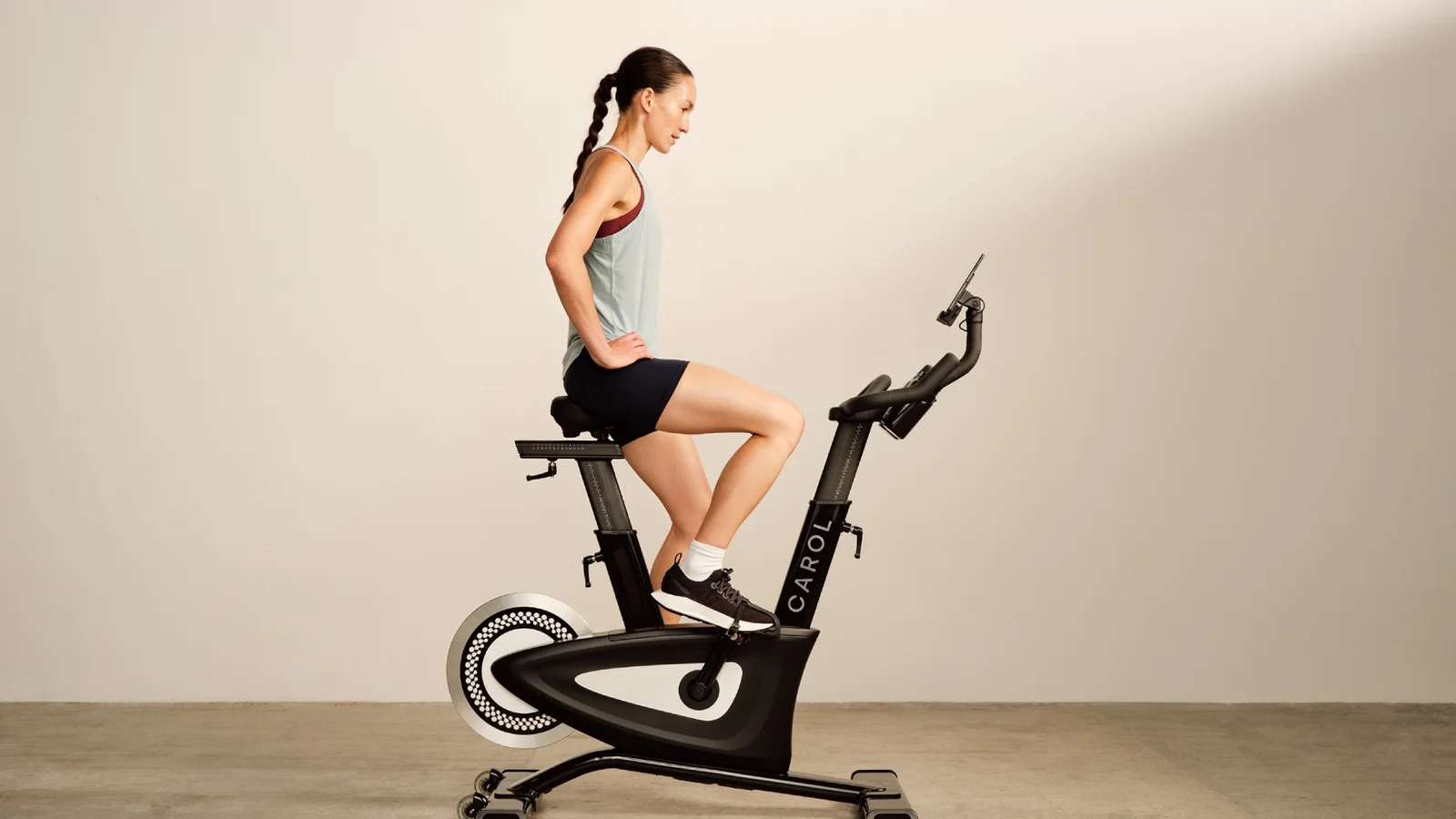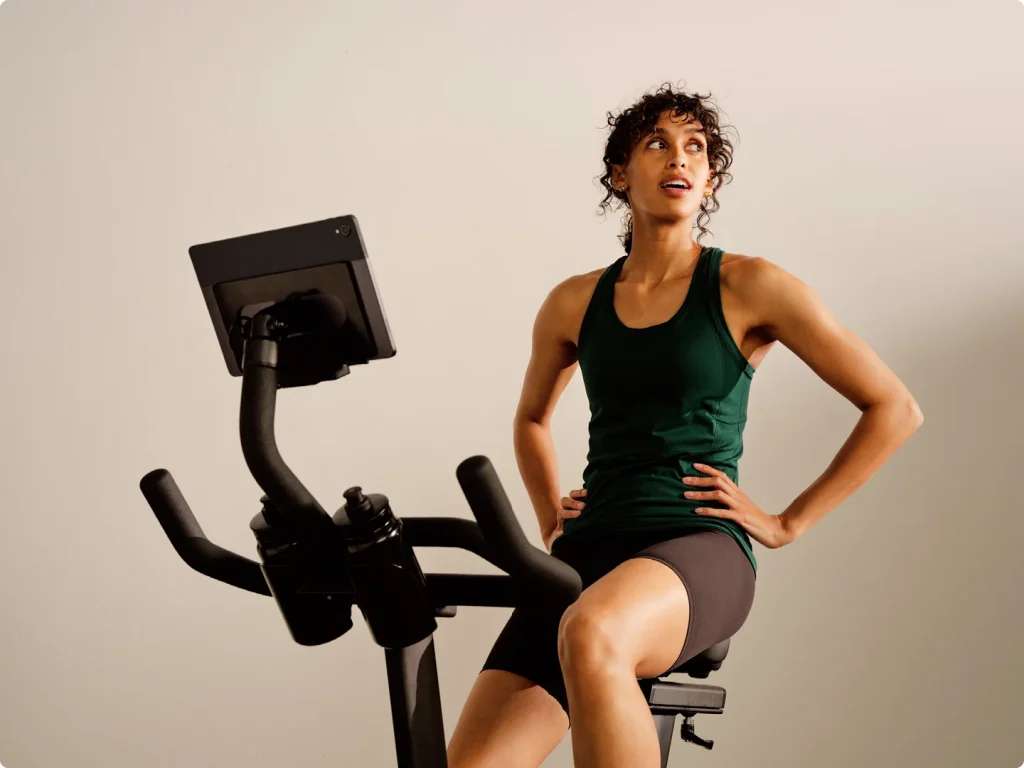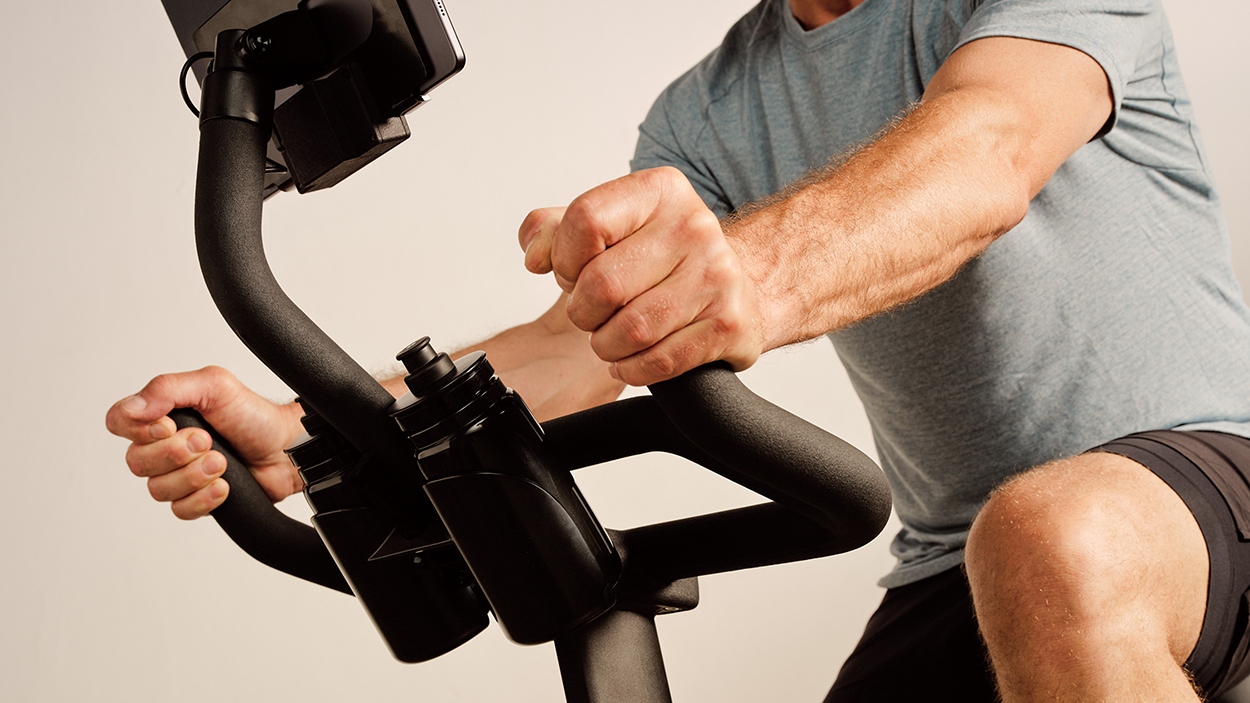A stationary exercise bike provides the flexibility to customize your cardio workouts according to your specific needs, fitness level, and goals. One of the greatest advantages of using a stationary bike is its ability to offer both high-intensity and low-impact exercise options, giving you versatility in your training approach. Whether you prefer intense interval workouts or longer endurance sessions, these 5 tips will help you optimize your training and achieve visible results more efficiently.
1. Do a proper warm up
A proper warmup is crucial for preparing your muscles for intense exercise by gradually increasing your heart rate, blood flow, and body temperature. Skipping this essential part of your training can increase the risk of muscle strains, injuries, and pain.
To ensure an effective warmup, it is recommended to allocate between 5 to 10 minutes. Interestingly, Harvard Health advises against relying solely on static muscle stretching for injury prevention and soreness reduction. Instead, experts recommend a gradual and active warm-up period that gets the blood flowing to your major muscle groups, loosens your joints, and activates your heart. This can be achieved through dynamic warm-up exercises, where you engage in the same physical movements as your intended activity but at a comfortable pace. For indoor cycling, a suitable warm-up would involve pedaling at an easy pace for around 5 minutes. The same principle applies to the cooldown phase after your workout.
While stretching can have its benefits, it is more advantageous to incorporate it into your routine at the end of your bike workout, following the cooldown period, when your muscles are already warm. This allows for greater flexibility gains and helps prevent muscle tightness or potential injuries.
2. Maintain the correct position
Before you begin your indoor cycling session, it’s important to properly adjust the bike seat. Set it at hip level so that when you make half of a pedal stroke, your knees remain slightly bent. This positioning helps prevent knee and hamstring hyperextension, reducing the risk of discomfort and potential injury.
When it comes to maintaining your back position during indoor cycling, there are 3 options to consider. The first is keeping your back straight, which provides the most comfort but may result in lower power output. Alternatively, you can tilt your upper body slightly forward at around a 45-degree angle, which increases your power output. Lastly, cycling with an inclined back at approximately 15 degrees offers the highest power potential, but it may be less comfortable, especially for beginners who are not yet accustomed to this position.

A proper warmup is crucial for preparing your muscles for intense exercise. Experts recommend a gradual and active warm-up period that gets the blood flowing to your major muscle groups, loosens your joints, and activates your heart.
3. Stay in the right heart rate zone
Heart rate, measured in beats per minute (bpm), is a valuable tool for gauging the intensity of your stationary bike workouts and ensuring optimal training effectiveness and safety. By staying within the appropriate heart rate zone, you can achieve your desired results while minimizing the risk of overexertion.
To determine your heart rate training zones, it’s helpful to establish your threshold heart rate (THR). One way to do this is by performing an FTP (Functional Threshold Power) test on CAROL Bike. During the test, you engage in a 20-minute all-out effort, pushing yourself to your maximum capacity. When you’re finished, CAROL Bike’s AI calculates your FTP as 95% of your best 20-minute average power level. Afterward, you can calculate your average heart rate during this session and subtract 5% to obtain your threshold heart rate.
Using your threshold heart rate, you can then define five distinct training zones based on specific percentage ranges. These zones enable you to target different objectives and training intensities, allowing for a more structured and effective workout experience. Monitoring your heart rate throughout your stationary bike sessions will help you stay within the desired training zone and optimize your training efforts.
Zone 1: 60-64% of THR
This is a warm-up pace or recovery ride.
Zone 2: 65-70% of THR
This is the endurance zone or a baseline pace for long-distance cycling.
Zone 3: 75-84% of THR
This is the tempo zone where you get beyond your comfort zone to build up your current endurance.
Zone 4: 85-94% of THR
This is the lactate threshold zone also known as race pace. In this zone, your body switches to an anaerobic energy system and your muscles produce lactate acid as a byproduct.
Zone 5: 95-100% THR
This is above the threshold zone where you work at a supra-maximal intensity and utilize as much oxygen as possible. It can only be sustained for a few minutes or less.
During its signature REHIT workout, CAROL Bike keeps you in Zone 5 for 2×20-second sprints by adjusting the resistance level to your personal maximum. It is based on research that has shown that 2×20-second all-out sprints are enough to deplete up to 30% of the body’s glycogen stores and trigger metabolic changes that increase calorie afterburn and significantly improve aerobic fitness.
4. Check training indicators on your stationary bike
Indicators on your stationary bike help you focus on specific workout goals and accurately measure your progress. Here are the main indicators you should pay attention to:
Speed
Your average speed is the most basic indicator of how your training is going over time. You can track how you get fitter and faster as it keeps growing. Keep in mind that all other conditions such as distance, incline, and resistance levels should be the same to make the comparison valid.
Time
Workout time is a great metric for working on your pace. You can make your stationary bike workouts more intense by cycling the same distance over shorter periods of time. It is especially important for interval training where you work out at a maximum capacity during short bursts of exercise. It helps you achieve more efficient results keeping the training time to the minimum. CAROL Bike’s REHIT ride delivers superior health and fitness benefits compared to regular exercise—in 90% less time.
Distance
To enhance your endurance on a stationary bike, it’s crucial to prioritize increasing your cycling distance over time. By gradually setting and achieving small goals, you can steadily build up your capacity to cover longer distances during each training session. This progressive approach not only improves your cardiovascular endurance but also prepares you for long-distance events and marathons.
Power (WATT)
Cycling power is the most accurate measure of your effort. The more power you produce, the faster you go. Power is linked to another important fitness benchmark—functional threshold power (FTP.) FTP indicates your highest sustainable power output for 60 minutes measured in watts per kilogram. This figure is more accurate than a target heart rate and it is often used to structure your stationary bike workout around particular power zones. As you get fitter, your FTP increases, and you’ll need to adjust your training regimen and reset your training zones. The easiest way to determine your FTP is to run a 20-minute test on CAROL Bike.
Cadence or RPM (rounds per minute)
Pedaling cadence is the number of revolutions you spin per minute. This metric is important to gain leg strength and improve speed. Cycling at a lower cadence typically puts more strain on your muscles, while a higher cadence shifts the load more to your cardiovascular system so you can choose the cycling drill depending on your fitness goals.
Elevation
Hill climbing is great strength and endurance training. By setting yourself elevation goals you can boost your fitness and tone your muscles. Gaining 1,000 feet of elevation per 10 miles of riding is considered a “golden ratio” in a cycling workout so you can set goals accordingly.
Rate of perceived exertion (RPE)
Rate of perceived exertion measures how hard you feel like you’re working on a 1 to 10 scale based on your breathing rate. RPE depends on your cardiovascular fitness level and is not directly related to power output. Beginner cyclists can be out of breath while barely producing power at light resistance levels while advanced cyclists will have lower RPE during intense stationary biking. Together with your heart rate, RPE gives you a more accurate picture of your actual effort.
Calories (Kcal)
A calorie is a unit of energy burnt during a training session. This goal is important for efficient weight loss training. Remember that high-intensity interval training burns more calories during the hours following your workout than during the training itself due to the excess post-exercise oxygen consumption effect (EPOC). Studies have shown that CAROL Bike’s REHIT and Fat Burn Rides elicit a significantly higher post-exercise caloric burn compared to the calories burned during the actual training session. Resulting in a two fold increase in calorie expenditure.

CAROL Bike's REHIT ride delivers superior health and fitness benefits compared to regular exercise—in 90% less time.
5. Diversify your indoor cycling workouts
Combining different types of training in your stationary cycling helps you make the most of cross-training and improve your fitness level faster.
Interval training is the most efficient way to improve your cardiovascular fitness and burn calories.
Training at a low and moderate pace can be used as active recovery on the days between your HIIT sessions to maximize the fat-burning effect. It is also an efficient way to improve your endurance, enhancing your performance during HIIT.
You will achieve even better results if you add 1 strength and 1 flexibility training session per week to your workout schedule. Growing muscle mass will increase your power output during cycling.
Your regimen also depends on how much time you can invest. Regular bicycle training takes at least 30-45 minutes while a HIIT session lasts only about 20 minutes. REHIT is the shortest, most efficient way of training, giving you the benefits of HIIT in just 5 minutes. Diversifying your stationary bike workouts makes your routine more fun and prevents burnout.
Using the correct training technique, setting the right metrics to track your progress, and building a workout schedule will maximize the effect of your stationary bike workout and help you achieve your fitness goals more efficiently.

Got a question? Let's book a call.
All our experts have MSCs in Exercise Science, and they’re here to answer your questions. Whether it’s about the science behind CAROL Bike, or general fitness advice, whatever’s on your mind—we’re here for you.


